
nepali citizen
foreigner
| Trek Name: | Annapurna Base Camp Trek |
| Best Season: | March - April - May and Sept - Oct - Nov |
| Transportation: | Helicopter, Jeep, Bus, Horse |
| Accommodation: | Tea House, Hotel |
| Grade: | A |
| Highest Point: | 4130m/13550ft |
| Duration: | 10 days |
| Group Size: | 12-15 |
| Attraction: |
Annapurna Base Camp trek is one of the renowned treks listed among many trekking routes in Nepal. It is also known by another name which is 'Annapurna Sanctuary Trek'. This trek not only gives the experience of the mystical Himalayas, evergreen forest, flora and fauna, on the other hand, it connects with the culture and linguistic diversity present in Nepal. The base camp trek is well known among South Asian countries and fall under the category in which trekkers can pass through two base camps.
The majestic bird-eye view of the Glaciers, Mountain, Hot springs, Gurung community, a highest and longest suspension bridge of Kaski are some major attractions. More to this trekking and travelling is the utterance of your own self with the exploration and discovery which differs from one to another human.
What does it take to conquer the pinnacle of the mystic Snow-capped Himalayas? Anyone might ask. - It takes a lot of commitment, dedication, team, and skill to endeavour the forehead however one can always fulfil their dream in a country like no other, Nepal. Nepal nation of Himalayas, which consists of 1,310 peaks above 6,000 meters and out of 10 highest peak 8 peaks lies in Nepal, which makes our Nation a promised land for Mountaineer and trekkers and on this note, you will know about Annapurna Base Camp trek.
| trip date | price (rs) for nepalese | price ($) for foreigner | total seat | |
|---|---|---|---|---|
| Oct-05-2021 - Oct-15-2021 | Rs 19500 | $ 600 | 14 | |
| Mar-05-2021 - Mar-15-2021 | Rs 19500 | $ 600 | 12 | |
| Feb-10-2020 - Feb-25-2020 | Rs 19500 | $ 600 | 15 | |
| Mar-05-2020 - Mar-13-2020 | Rs 19500 | $ 600 | 15 |
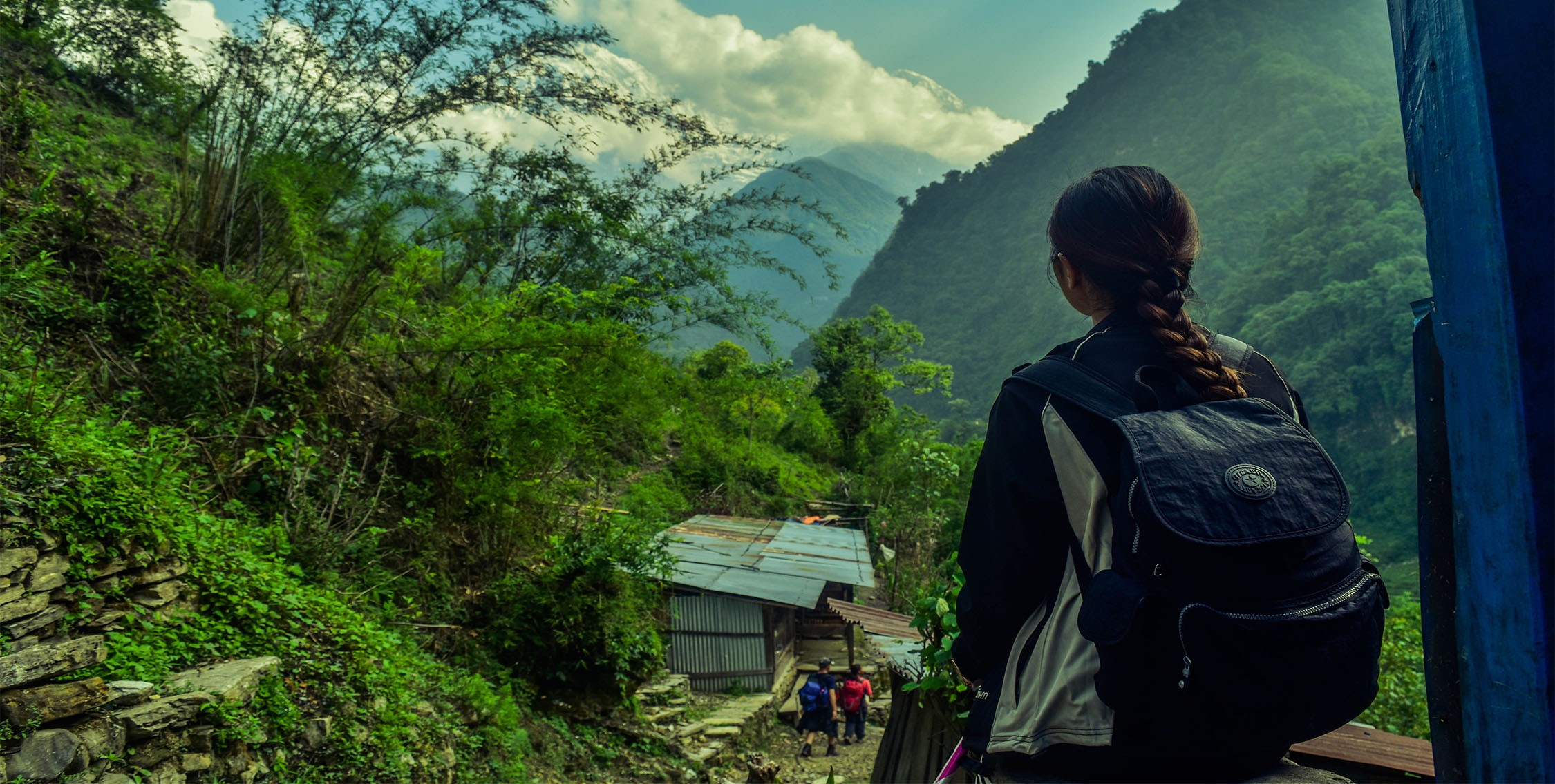
On the first day, we will travel from the Capital city, Kathmandu then across the land of lakes & caves, Pokhara, and final destination Siwai which is approximately 260 kilometres via Prithvi Highway. The path astray from Nayapul, Kaski from this point we will be heading towards North direction. For the first night, we will settle down at Siwai (Small village beside the Modi River)
FYI: The major highway will lead you to places like Kushma, Baglung, Dhorpatan, Myagdi, Beni, and Mustang.
Day 02- Trek from Siwai to Lower Sinuwa (2,300 metres) [6-7 hours']
With the flaunting sound of the river, trees, crops & sunshine spreads on the massive range, your beautiful day starts. After breakfast at the stayed hotel, we will head to Sinuwa. We will cross beautiful several villages, up and down through the forest and sprawling fields and before Jhinu Danda (Lunch Place), we will be crossing the highest and longest suspension bridge of Kaski. After lunch path will be a combination of up and downhill. The second-night halt will be at Sinuwa.
Day 03- Sinuwa to Deurali (3,100metres) [6-hour hike]
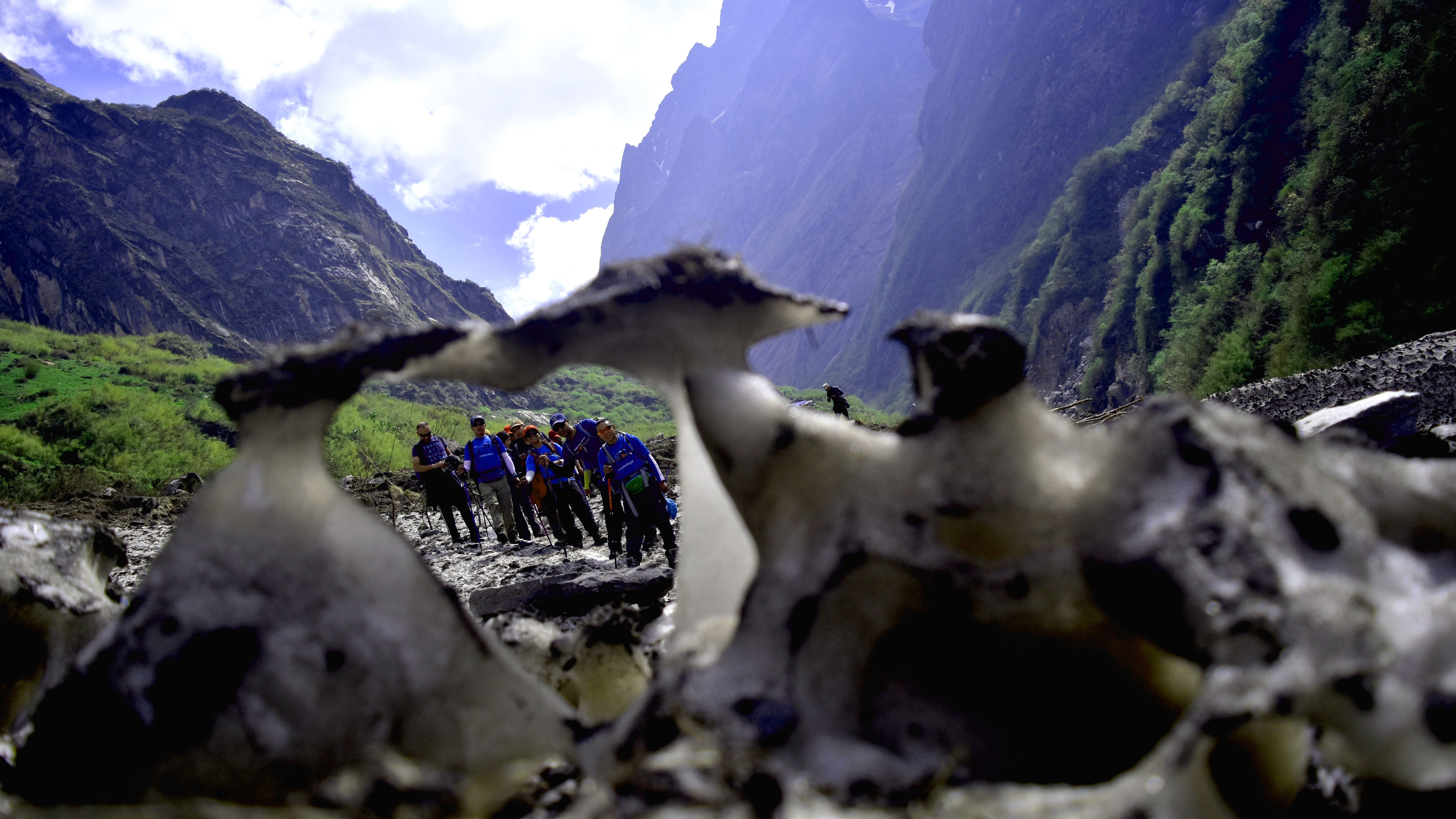
Day 04- Deurali (3,100m) to ABC (4,130m)
 It is crucial that waking up early during the trek not only to witness a spectacular sight but for health reasons. After breakfast at the accommodated place, we will commence our walk to Annapurna Base Camp. The ovation you will always hold will be a lifetime memory and the trip that you have just made with the ever-sticking view of Mt. Macchapucchre (6,993m), Himchuli (6,441m), Annapurna (7,555m), Gangapurna (7,455m) and Gandharva Chuli. The majestic view of the open sky with stars could be observed during night time between 3 am and 5 am.
It is crucial that waking up early during the trek not only to witness a spectacular sight but for health reasons. After breakfast at the accommodated place, we will commence our walk to Annapurna Base Camp. The ovation you will always hold will be a lifetime memory and the trip that you have just made with the ever-sticking view of Mt. Macchapucchre (6,993m), Himchuli (6,441m), Annapurna (7,555m), Gangapurna (7,455m) and Gandharva Chuli. The majestic view of the open sky with stars could be observed during night time between 3 am and 5 am.
Day 05- ABC to Bamboo [ 6 hours' hike]
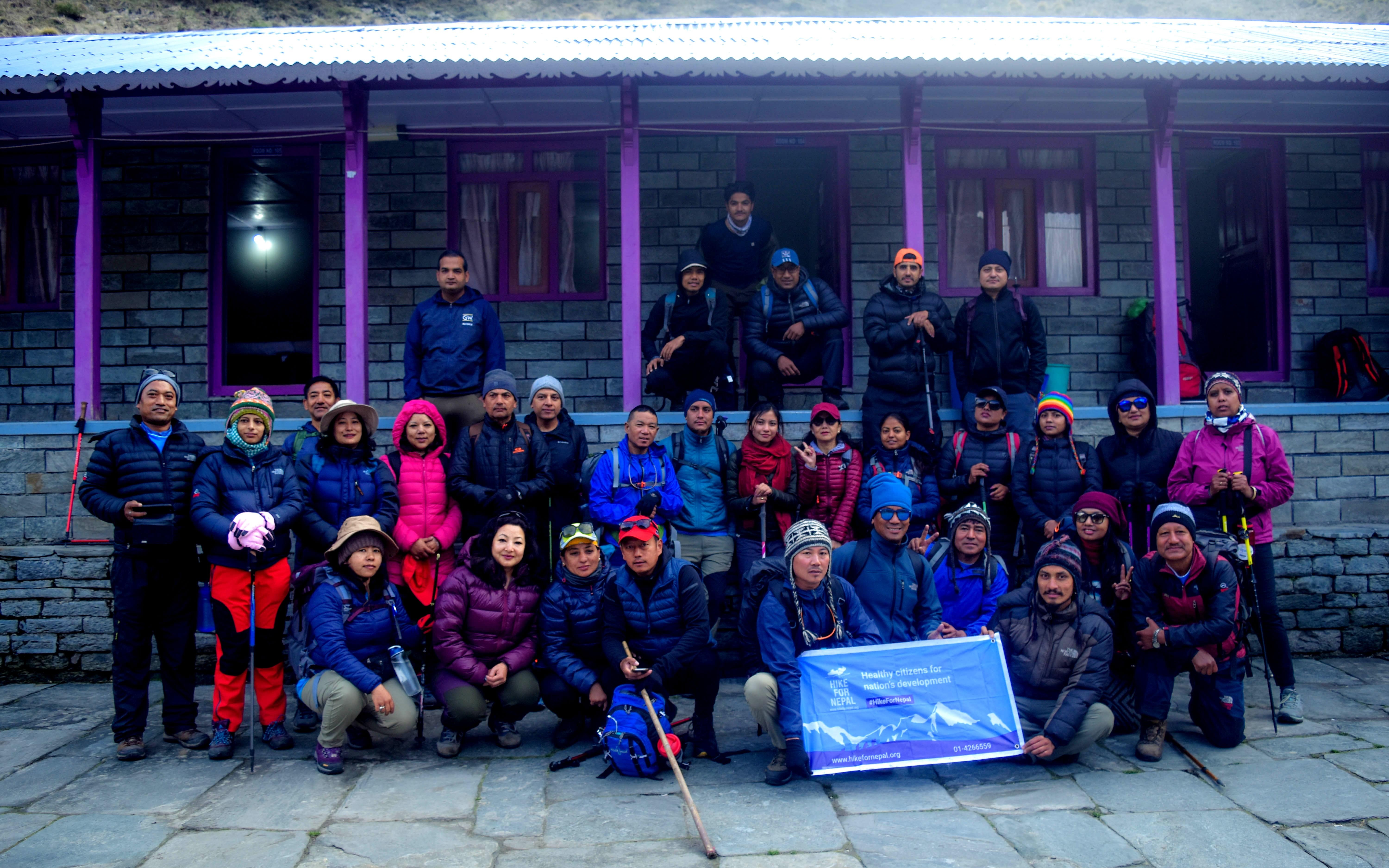 It is time to leave those beautiful mountains and head towards the starting point of the journey. After the usual time of breakfast, we will start our journey. At the end of the day, we will spend the night at Bamboo.
It is time to leave those beautiful mountains and head towards the starting point of the journey. After the usual time of breakfast, we will start our journey. At the end of the day, we will spend the night at Bamboo.
Day 06- Bambo to Jhinu Hot Spring [ 6 hours' hike]
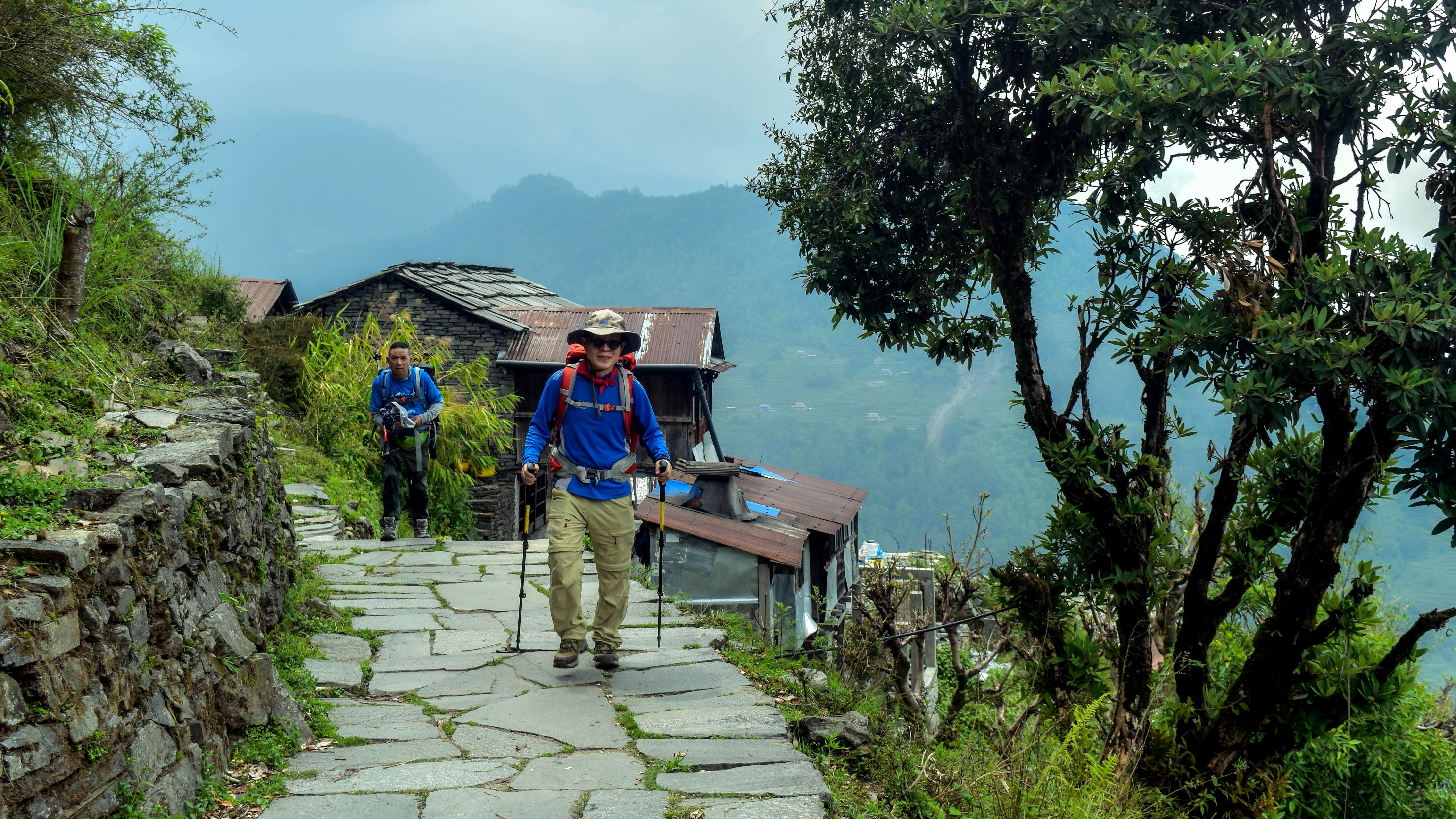 After nice and tired sleep, we wake up and get fresh air of bamboo, we have almost the same breakfast and head to Jhindudanda.
After nice and tired sleep, we wake up and get fresh air of bamboo, we have almost the same breakfast and head to Jhindudanda.
Day 07- Trek to Matque and drive back to Pokhara (6-hour hike) & {3-hour drive]
 Early in the morning we go to hot springs and have a natural hot spring bath. And yes, Sewai is the place from where we will take a vehicle to drive back to Pokhara. It will take roughly 1 hour from Jhinudanda to Matque, and another 3 hours to Pokhara. After reaching Pokhara you will be assigned your room, you will get refreshed and you can enjoy the nightlife of Pokhara. On this last day, dinner at Pokhara is not included and you can make your own choice for the dinner place. Tomorrow bus leaves early in the morning, you must make sure to wake up for the departure.
Early in the morning we go to hot springs and have a natural hot spring bath. And yes, Sewai is the place from where we will take a vehicle to drive back to Pokhara. It will take roughly 1 hour from Jhinudanda to Matque, and another 3 hours to Pokhara. After reaching Pokhara you will be assigned your room, you will get refreshed and you can enjoy the nightlife of Pokhara. On this last day, dinner at Pokhara is not included and you can make your own choice for the dinner place. Tomorrow bus leaves early in the morning, you must make sure to wake up for the departure.
Day 08- Drive to Kathmandu (6-7 hours)
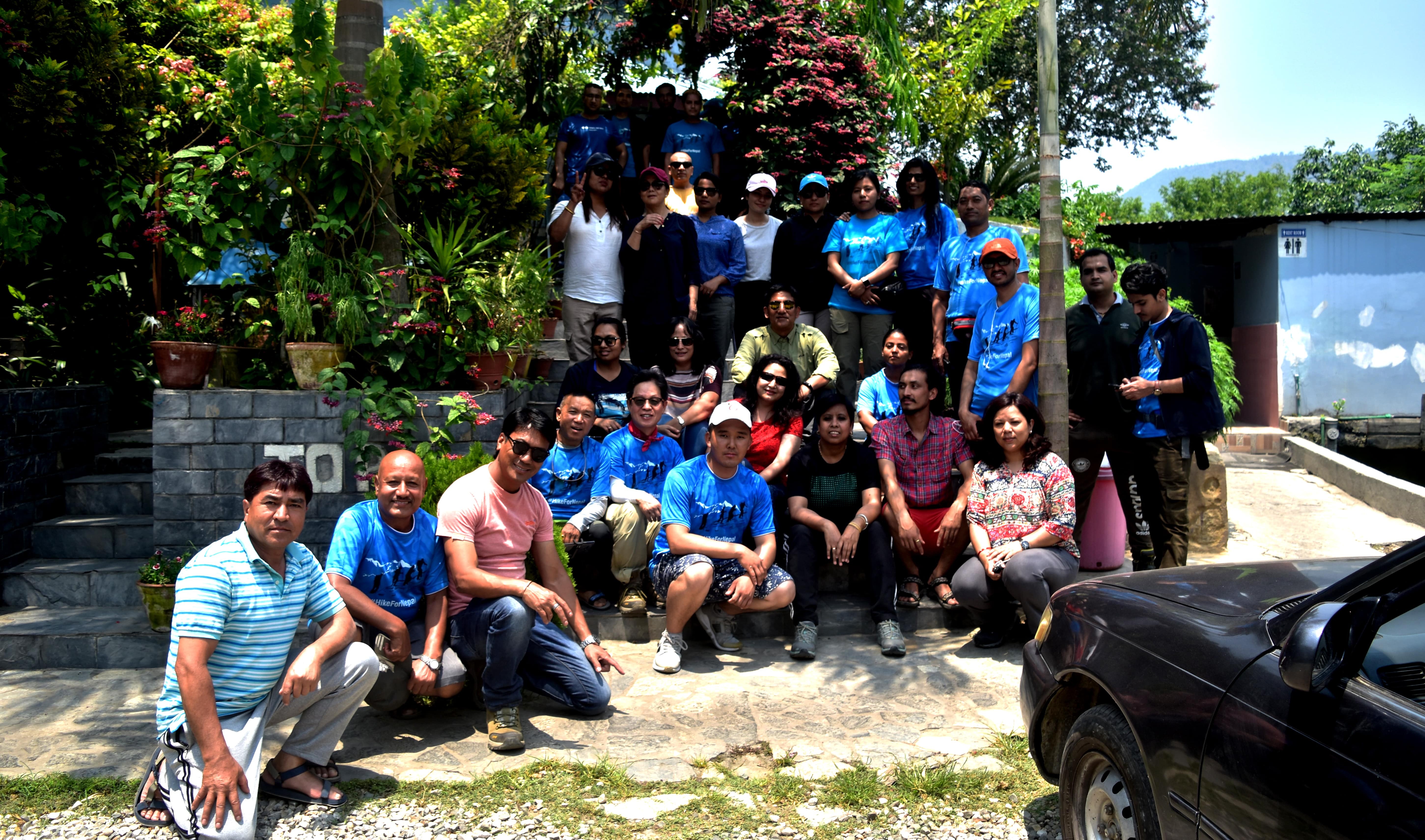
Cost Includes
Cost Excludes
Qualification/Training
Best physical condition is required to do trekking in Nepal in high altitude. Lots of up down includes while doing trekking. We suggest running, walking, hiking in the hill, climbing stairs rather than elevator to prepare for the trek. Include swimming, rowing, biking in your daily base training.
Basic further Experience to do Trekking
What is trekking?
For some, it is an adventure and for some, it might be a challenge. Walk which includes multiple days to reach a destination is termed as trekking,
In Nepal, mostly tea house trekking and camping trek have been practising. Tea House trek means you will walk up to the night destination and spend overnight at the hotel in the Himalayas. Whereas, Camping trek you will be experiencing night inside the tent.
Is "Trekking Guide" mandatory in Nepal? I do have experienced hikes/ treks and camping. Can I do it on my own?
Well, it is not a compulsion to hire a guide however, going along with the guide and the registered firm provides you with many beneficial things and makes ease during your travel. Up in the Himalayas, a few villagers are known with the English language and it might bring communication problems.
Next thing is about your safety and mobility. Booking with a company can make your journey feasible when it comes to safety and security as they ensure everything is going well. And no matter how knowledgeable you might feel, hiring a guide will embellish in everything and in situations.
What is the elevation of Annapurna Base Camp (ABC) and Machhapuchhre Base Camp (MBC)?
ABC elevation is 4,130 meters above the sea level and MBC elevation is 3,700 meters above the sea level.
How tough is Annapurna Base Camp trek?
Walking in high elevation is definitely a herculean task because of the low level of oxygen. However, it mostly depends upon the traveller’s health as well so we suggest trekkers to prepare forehand. You can go for regular running and build up your stamina. Use stairs instead of lifts. With proper preparation, one can easily accomplish the trek.
What is the total distance covered during the trek and how many kilometres will we walk in a day?
The total distance for the whole trek is 115 kilometres while you will only walk 12-20 kilometres (7-12 miles) depending upon the destinations. The path of Annapurna Base Camp trek follows the Modi River with variation in the path.
What are the symptoms of Altitude Sickness?
Mood swing, Headache, nausea and vomiting, dizziness, tiredness, loss of appetite and shortness of breath are the symptoms of Altitude Sickness
What precaution should be taken in case of Altitude Sickness?
Prior to the trip, you can do some breathing exercises to expand the lung capacity. If someone seems to have the symptoms of Altitude Mountain Sickness (AMS) then the guide will check the health condition and decide whether trekkers will make a halt for the night or will take trekker to lower elevation to mitigate the condition.
From which place can we witness the majestic Himalayas in this trek?
As you know, Nepal is well known for the Himalayas. The mountains range covers 16% of the land. Upon crossing 3,000 meters one will be able to see the mountains. Now, imagine how the view will be from 4,130 meters.
Which mountains can be seen from Annapurna Base Camp and Machhapuchhre Base Camp?
Annapurna range includes Annapurna I (8,091mt), Singu Chuli (6,3190 meters), Ganga Purna (7,455 mt), Glacier Dom (7,139 mt) Annapurna III (7,556), Gandharva Chuli (6,249 mt).
A simple design without wheels and without foldable handles is best for your gear to be carried by porters. You can buy in thamel, although they are not as tough as the North Face Base Camp Duffel.

Down-filled bags are fluffy, light and thick. 4-5 season sleeping with a muff an extra section around the neck that makes a big difference to the overall warmth of a bag is recommended. You can rent reasonable sleeping bags cheaply in Thamel.
Cotton – it saves washing your sleeping bag and adds warmth. Cotton or silk ones can be made in Thamel but are more easily brought from home. Fleece ones are readily available in Thamel.
Extremely light, warm and easy to pack – they are very handy in cold regions, especially during chilly mornings and evenings. Better to get the down jackets that can hold against -10 °C up to 3000m and -20 °C for altitudes above 3000m. They can be easily bought or rented in Thamel.
This should be comfortable with a good waist band that transfers some of the weight to the hips. It needs to be big enough to hold all the items you need for the day till you reach the next camp like a jacket, water, camera and odds and ends.
Lightweight boots with good ankle support, plenty of toe room for long descents, a stiff sole to lessen twisting torsion are the best. Look at the inner lining -leather is good and Cambrelle is even better, a material that eats smelly feet bacteria. Try them in some steep terrain before trekking to find trouble spots.
Quality cotton mix sports socks (3-4 pairs) are good while in the low country. Thick trekking socks (3-4) are better for higher up and cool evenings. Mostly modern trekking boots fit snugly so wearing two pairs of socks at the same time is impractical.
A luxury for your feet at the end of the day is the most important thing. Sandals or running shoes are good. Flip-flops, available for cheap in Thamel, is a necessity for showers during the trek.
Most trekkers consider this essential, but alternatives are a thick thermal top or a light down jacket. In Thamel you can get almost any sort of fleece you need.
Windproof and breathable jackets are comfort during windy days. Make sure they have hoods. Gore-tex (or similar) jackets are recommended for treks over passes or climbing trips. Lighter jackets should be a second jacket, easy to throw in the daypack in warmer days.
Bringing a raincoat/poncho or an umbralia is a sensible thing when you are in the mountains as you never know when Mother Nature wants to have some more fun.
Lightweight thermals are great for warm nights in the sleeping bag. It will help you to secure your energy.
You will live in these. Light material, loose and dark-coloured is the best. You can survive with only one pair, although two/three is better. Rather than Dark is recommended for the trek to attract even from the distance .
Woollen/mixed synthetic warm cap or balaclava is nice for the evenings. Also it needs during the night to prevent from the cold or wind.
For winter trekking they are really the best for staying warm. It will save you from the cold and prevent from sore throat. Also, this can be used for multipurpose.
Definitely useful, especially on steep, rough terrain, but if you are not used to using them you can survive without.
Suitable for snow, it’s bright up there, but specialized glacier glasses with side pieces are not needed. Contact lens wearers report very few problems except cleaning them in the conditions. Ski goggles are unnecessary.
Fleece gloves are also a must. However, a good pair of wind and waterproof/ gloves are also essential for foul weather. Available in Kathmandu for cheap if you don’t have a pair.
Should be one liter or more in capacity, take boiling water and be leak-proof. Nalgene or a similar brand, or European fuel bottles are the best. You need at least 2 water bottles or at least 1 water bottle in addition to a Camelback or hydration system.
Petzl Tikka’s and other similar torches with LED bulbs rule. They are quite helpful for trips to the toilet at night!
Sunburn doesn’t look and feel as cool as the beach burn. Get sunscreen with SPF 30 or higher depending on the sensitivity of your skin. You should also use a lip balm with high SPF. Also, have a wide-brimmed hat to go with.
We carry one with aspirin, paracetamol, ibuprofen, decongestants, lozenges, various antibiotics for Nepalese varieties of diarrhoea and chests infections, Diamox (an acclimatizing aid drug), antiseptic, antihistamine cream, rehydration, bandages and band-aids, tough blister tape (but not moleskin). As we are not certified to prescribe medicines you have to use them at your own risk. You have to bring any personal medicines that you need.
Bring a bottle of iodine tablets such as Potable Aqua, Piyush, Couglans etc or any other similar tablets. Bottled water is available on the trail.
Most people find wearing one while trekking is a hassle and keep it buried in their kitbag or daypack. But they can be handy.
When you are free for independent activities, especially in the evenings' books can be a good friend. Kindles are also fine. Note Pad is also important for making diary entries and taking notes of things that catch your interest.
Though there are charging facilities available in the hotels, lodges and teahouses in route, bring power bank when you are in the mountains. You never know when there will be a power cut or occur some technical emergencies.
The smallest tube of toothpaste is perfect for a month. You need to bring or buy along the way. Your personal toiletries come in the list. Make sure you also have toilet rolls or tissue paper for emergencies.
Bring only a small one trekking or a camp towel. You can buy anywhere in the trekking gear shop in Thamel.
How do I prepare myself for the trek?
Trekking in Nepal usually starts from 2,500 meters to 6,000 meters above the sea level. For this reason, you must need stamina and endurance.
The initial steps towards trekking can be going for a run on a regular basis, using stairs instead of lifts and respiring exercise (Kapalabhati) to expand the capacity of lungs.
Beside during trekking, the itinerary will consist of more than one day of acclimatization so it is all right.
Should I bring trekking gears and clothes or can I purchase in Nepal?
Nepal, a well-known place for trekking, mountaineering and for gathering lifetime experience regarding travel. After you land in Nepal, Thamel is the main hub for tourists.
In Thamel, you can find a needle to ship for trekking. With a lot of varieties ranging for quality and price, it is an appropriate place for shopping. And do you know? You can hire stuff as well.
Which season is best for Trekking?
In Nepal for trekking February to May and September to December is the best season for it. Although it does not mean that you cannot trek in other months, you can trek up to 4,000 meters as it gets more freezing up in the Himalayas and due to heavy snowfall one can wander off from the path while the high passes also get blocked by the snow.
Do I need a permit for trekking?
It is equally important to understand Nepal has many National Park and Conservation Area in which special trekking permit is needed. While most area trekking paths require Trekking Information Management System (TIMS). Your trekking company will take care of it so just think about it.
What insurance and policy are needed?
It is a crucial aspect and an avoidable thing that you must do before initiating your journey. Make sure to forward a copy of the insurance before your departure for the trek.
Room and Boards
What is teahouse trekking?
Teahouse trekking is known for those trekking in which trekkers spend an overnight in the hotel owned by the local in the specific area. The trek will have a fixed camp as the local lodge will only be available at certain spots.
What is Camping Trek?
Camping treks are usually long treks in which your all essential will be carried by the staff, food will be prepared by trekking cooks inside the mobile camp.
What kinds of rooms will be available, can we get attached rooms?
During trekking, lodges will be well furnished which will consist of bed single bed. However, attached bathrooms could be managed up to some point which depends upon the package you have booked.
What kind of meal can we have during our trek?
The famous trek will include the lodge and guesthouse facilities which will include a continental menu with variety of choices regarding soup, rice and noodles. However, if you plan to trek in the remote area then the available food will be Daal, Bhat and regional foods such as Dhido (Millet, Buckwheat flour).
Health and Security
How can I be sure that I am fit for trekking?
If you feel fine both physically and mentally and overall condition of the past is okay then you can definitely join the trek however if you think somehow something can impact on your stamina then seeking expertise before the trip will be a great idea. And do make sure you have some hiking experience so that it will help for a multi-day walk.
What are the things that can be done for acclimatization?
The itinerary will include the adjustment day which is one of the important to include during the trek. As you go up your pulmonary system will try to fit in with the atmosphere which has low oxygen volume. From day to day basic trekkers saturation & oxygen levels will be checked for health purpose. We will follow the basic principle to “climb high sleep low”.
And if trekkers feel uncomfortable to walk further then they can choose to rest and relax additional day.
What steps are taken during in case of injury/sickness during the trek?
Our well-trained guide will make sure that everyone's health and safety is in better condition. Depending upon the sickness and injury the guide will take the decision as they have attended the training for the purpose. And in case of Altitude Sickness, trekkers will climb down to a lower elevation. If evacuation situation arises then guide will call the rescue using your insurance details, and one will to evacuated to Pokhara/Kathmandu.
How to? Practical Matter
What kind of rucksack will be appropriate?
For trekking, 60l+ rucksack will be fine for anyone if they are doing it on their own but if your essential and things will be carried by weight assistant then you can only carry 35l to 45l bag to keep water, raincoat, chocolates and your belongings.
What kind of shoes and slippers are ideal for trekking?
The trekking contains will definitely include up and downhill with numerous types of terrain. So, the first thing your shoes/boots must-have is the comfortability. It must keep your feet warm, dry and the sole must be thick enough to absorb the rugged path. And use wool shock instead of cotton ones (Thick and warm).
Slippers are not widely used however you can use it while staying in the local lodges and it can be used as an option for shoes. (Thick sole, comfortable & durable).
What should I pack?
The essentials during treks will always be listed equipment with the itinerary however the seasons is the prominent thing which makes an impact while packing your stuff.
If you’re on medication then that will be the foremost thing you need to include while for the trek sleeping bag, fleece jacket, down jacket, wind stopper, a few pairs of socks, trousers and t-shirts. Make sure you pack all the essential but assure yourself that you haven’t packed unwanted things.
Usually, the thing for trekking can be purchased and also can hire in Nepal.
What is the weight limit for the Himalayan Weight Assistant (Porters)?
In the first place, porters carry two-person luggage which will fasten the total maximum weight of 15-25 kilograms. However, camping porter can carry up to 40 kilograms. And the weight also is reciprocal with the trekking region which varies the load.
How much hard cash should I take along?
Trekkers can only take $20-$30 per day so that they can purchase a water bottle, chips, snacks and for additional things they want to have on their own later for the tips as well. Of course, we do cover all the expenses for accommodation, lodging, fees, park permit and other costs as well.
How about the tips for staff?
As you know Tourism is a service-based industry, you can appreciate your staff by how much you can which can aid in their family. You can also offer them things if as a adore gesture if you want to at the end of the trip.
In the case of the unfinished trip, what is the policy?
In most cases, trekkers sometimes couldn’t complete the whole course and sometimes accomplish it before the noted days. One must understand that we do have a responsibility to pay the staff even if the trekkers have days left over.
| trip name | days | price for nepalese | price (US $) for foreigner | |
|---|---|---|---|---|
Heli Tours In Nepal |
1 to 4 days | Rs 25000 | $ 1100 |
Start your adventure here with us!
nepali citizen
foreigner
| Trek Name: | Annapurna Base Camp Trek |
| Best Season: | March - April - May and Sept - Oct - Nov |
| Transportation: | Helicopter, Jeep, Bus, Horse |
| Accommodation: | Tea House, Hotel |
| Grade: | A |
| Highest Point: | 4130m/13550ft |
| Duration: | 10 days |
| Group Size: | 12-15 |
| Attraction: |
© Copyright 2020 Hike for Nepal. All rights reserved. Powered By : Nectar Digit